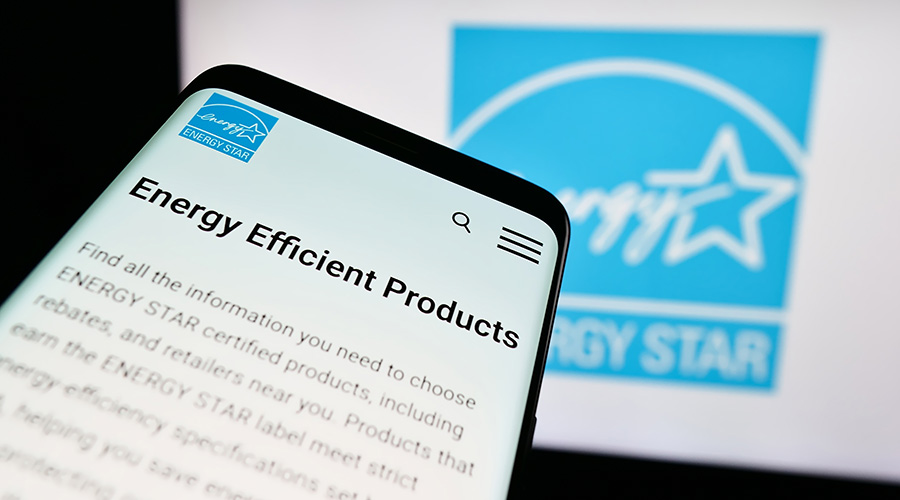6 Net Zero Energy Buildings FAQs
As climate change accelerates, facility managers are looking for best practices for decarbonization. Here are answers to some of the most pressing questions about net zero energy buildings.
Climate change is ranked as a top concern for both the public and private sectors. The U.S. Department of Energy has committed to achieving net zero carbon emissions by 2050 to mitigate costly natural disasters and create healthy, safe, and thriving communities via a clean energy infrastructure. Building owners and operators across North America widely agree that climate risk is investment risk. For this reason, the number of corporations with enterprise facilities, developers, and building owners and operators committed to net zero emissions doubled between 2019 and 2020.
Facility managers are often tasked with fulfilling a mandate on behalf of their building or company C-suite without a lot of direction or understanding of what it takes to get to net zero. Here are some answers to common questions that building operators looking to incorporate heightened sustainability will have.
1. What does “net zero” mean?
In 2021, the U.S. Environmental Protection Agency (EPA) is expected to release a specific definition of what it means to be “net-zero.” When applied to building systems, the term generally applies as follows:
- Net Zero Emissions: Emissions Produced = Emissions Offset — Achieves overall balance between greenhouse gas emissions produced and those taken out of the atmosphere.
- Net Zero Energy: Total Annual Emissions = Amount of Renewables Generated On-site — Generally speaking, building produces enough renewable energy to meet its own annual energy requirements, subsequently reducing the use of nonrenewable energy in the building sector.
- Net Zero Carbon: No Emissions — Refers to achieving net zero carbon dioxide emissions by balancing CO2 emissions with its removal—or simply by eliminating its production altogether.
- Carbon Positive: Produce More Renewable Energy Than Used — Moves beyond carbon zero by producing more energy on site than the building requires and feeding it back into the power grid. Though the term is somewhat confusing, it can be how organizations describe themselves as being “carbon negative” and “climate positive.”
2. What net zero goal is recommended for buildings?
If financially feasible based on building type, size, and location, reaching net zero carbon by 2050 is advised. Carbon Positive would have an even greater environmental impact, especially in states without specific clean energy goals.
While it is a recommendation now, net zero may be a requirement in the future. Limiting global warming to two degrees Celsius (identified as the climate change tipping point) has become the de facto target for global climate policy. New regulations may be adopted to force compliance in meeting this goal. This net zero recommendation also recognizes the power grid challenges (eg. storage, legislation, land entitlements) likely to result in trying to meet the 100 percent clean energy goal by 2050.
3. How can my building get to net zero?
Pick the right solution: Regardless of the net zero path you choose, the first step should be understanding your building’s largest contributor to global warming. This is not necessarily limited to CO2 and could be other greenhouse gases such as methane or refrigerants. If your facility or tenants have a sustainability director, that person should be able to share this information and help you pick the best implementation strategy. A clear understanding of the quantifiable impact your business is currently having on the environment can pave the way for quicker approval and action.
Identify the winners: You should also consider who specifically benefits from these decisions. A net zero goal supporting the need for an energy efficient building, as measured by energy use intensity (EUI), can pave the way to lower utility bills. (EUI is an indicator of the energy efficiency of a building’s design and/or operations and can be thought of as a “miles per gallon” rating for the building industry.) It can also make a better return on investment (ROI) argument for on-site renewable energy, which in turn can reduce a building’s carbon footprint.
Look for financial help: There are often financial incentives to make doing the right thing for the environment easier. Seek out federal, state, and local incentives to promote energy efficiency and renewables.
Finally, if purchasing carbon offsets, be selective on who you choose. Focus on carbon offsets that support equity and other qualitative measures that can help with your organization’s environmental, social, and governance (ESG) reporting.
4. What net zero building certifications are recommended?
There are many to consider — Passive House Institute U.S. (PHIUS) 2021, Zero Energy Certification from the International Living Future Institute, LEED Zero from USGBC, and many more. Also, the options are constantly updating to reflect the current grid mix and technologies. A qualified professional can help you determine the best certification that overlaps current carbon offset investments, provides a prescriptive climate-based path to a lower EUI, and paves the way for on-site renewable energy.
5. What does all the net zero jargon mean?
There is a lot out there, but here are some of the more common terms relating to the built environment:
- Decarbonization: Removal of carbon from energy consumption.
- Electrification: Focus on equipment (buildings, transportation) that is powered by electricity that supports the need for a clean (and reliable) grid. Consider all climate-based electrification solutions that are cost feasible.
- Carbon Taxes: Taxes implemented through legislation. An example is NYC Local Law 97 which will tax buildings failing to meet the city’s performance based standard.
- Supply Chain Emissions: Scope 3 emissions that the purchaser absorbs following a transaction that represents the emissions generated to create the product. In the architecture industry, this is known as embodied carbon. Use a life cycle analysis software to calculate a project’s material’s embodied carbon and has presented on its growing traction.
- Global Warming Potential (GWP): A measure developed to compare the global warming impacts of various greenhouse gases (CO2 is 1, methane is 28, and common refrigerants like HFC-134a is 4,800). Consider lower GWP refrigerants while electrification’s goal is to remove methane as a fossil fuel used by buildings.
- Carbon Capture: Technologies currently in production that capture and store carbon.
6. What does the future hold for the net zero built environment?
There are currently relatively few regulations in place to cap global warming to two degrees Celsius. With limited government oversight and guidance, it is up to individuals to act—and they have. Every day we are witnessing multiple and new solutions.
Driving investment in the built environment at scale in the near term will largely be from tenant demand and any new incentives from the federal government. To date, more than 9,600 companies disclose carbon footprint data annually and that number is growing exponentially. Once more of these companies make a net zero commitment to attract investors and talent, we will likely see more tenants searching for leases that do not significantly add to their carbon emissions.
Tim Zelazny, AIA, CPHC, LEED AP, BECxP, WELL AP, is senior sustainability and healthy buildings specialist for ESD Energy + Eco.
Related Topics:












